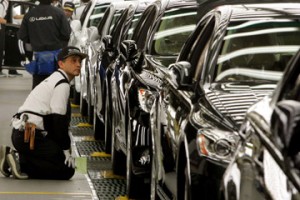 The world of Artificial Intelligence (AI) is rapidly evolving and becoming increasingly important in our lives. AI is a form of technology that enables machines to think and act like humans, and it has the potential to revolutionize the way we live and work.
The world of Artificial Intelligence (AI) is rapidly evolving and becoming increasingly important in our lives. AI is a form of technology that enables machines to think and act like humans, and it has the potential to revolutionize the way we live and work.
AI is already being used in a variety of ways, from self-driving cars to virtual assistants. AI can be used to automate mundane tasks, such as scheduling appointments or managing customer service inquiries. It can also be used to analyze large amounts of data and make predictions about the future.
AI is also being used to create more personalized experiences for customers. For example, AI can be used to analyze customer data and create personalized recommendations for products and services. AI can also be used to create more efficient and accurate customer service experiences.
It is also being used to create more efficient and accurate medical diagnoses. AI can be used to analyze medical images and detect diseases and conditions more quickly and accurately than humans. AI can also be used to analyze patient data and create personalized treatment plans.
Artificial Intelligence is also being used to create more efficient and accurate financial services. AI can be used to analyze financial data and make predictions about the stock market or other investments. AI can also be used to create more efficient and accurate banking services.
AI is also being used to create more efficient and accurate manufacturing processes. AI can be used to analyze manufacturing data and create more efficient and accurate production processes. AI can also be used to create more efficient and accurate supply chain management.
AI is also being used to create more efficient and accurate security systems. AI can be used to analyze security data and create more efficient and accurate security systems. AI can also be used to create more efficient and accurate facial recognition systems.
AI is an incredibly powerful technology that has the potential to revolutionize the way we live and work. As AI continues to evolve, it will become increasingly important in our lives.
chris@amberhill.biz

 The implementation of IIOT (Industrial Internet of Things) is transforming industry in many ways & one of the most interesting is in enabling companies to manage carbon reduction strategies & in doing so to make processes more efficient in terms of cost, quality & most importantly energy usage.
The implementation of IIOT (Industrial Internet of Things) is transforming industry in many ways & one of the most interesting is in enabling companies to manage carbon reduction strategies & in doing so to make processes more efficient in terms of cost, quality & most importantly energy usage. The U.K Governments decision to ban the sale of new petrol & diesel cars by 2030 presents some real challenges for the UK Automotive industry. A development lifecycle of 5-7 years is not unusual for a brand new model & when we are looking at a whole different powertrain & chassis with the consequent implications for production assembly then we are talking major developments.
The U.K Governments decision to ban the sale of new petrol & diesel cars by 2030 presents some real challenges for the UK Automotive industry. A development lifecycle of 5-7 years is not unusual for a brand new model & when we are looking at a whole different powertrain & chassis with the consequent implications for production assembly then we are talking major developments.


 Fantastic news today regarding the development of a National Automotive Innovation Campus at the University of Warwick.
Fantastic news today regarding the development of a National Automotive Innovation Campus at the University of Warwick. General Electric
General Electric
 On a recent business trip to Geneva I flew from Leeds Bradford Airport in the North of England. I checked through on time and headed for the gate to be met by a scene of organised chaos. The queue was very long and heaving with Schoolkids on exchange visits, holidaymakers and business people. At the very end of this long queue we were given a tray into which we had to load our laptops, keys, belts etc as part of the security screening process. This was undoubtedly the bottleneck and by the time I got through security to the Gate I was informed by an attendant that I may well have missed the flight. I was then subjected to admonishment, had I not heard the attendants calling people through for the Geneva flight – “No” , I hadn’t heard anything in melee – anyway to cut a long story short I caught my flight but not without a lot of hassle and stress.
On a recent business trip to Geneva I flew from Leeds Bradford Airport in the North of England. I checked through on time and headed for the gate to be met by a scene of organised chaos. The queue was very long and heaving with Schoolkids on exchange visits, holidaymakers and business people. At the very end of this long queue we were given a tray into which we had to load our laptops, keys, belts etc as part of the security screening process. This was undoubtedly the bottleneck and by the time I got through security to the Gate I was informed by an attendant that I may well have missed the flight. I was then subjected to admonishment, had I not heard the attendants calling people through for the Geneva flight – “No” , I hadn’t heard anything in melee – anyway to cut a long story short I caught my flight but not without a lot of hassle and stress.